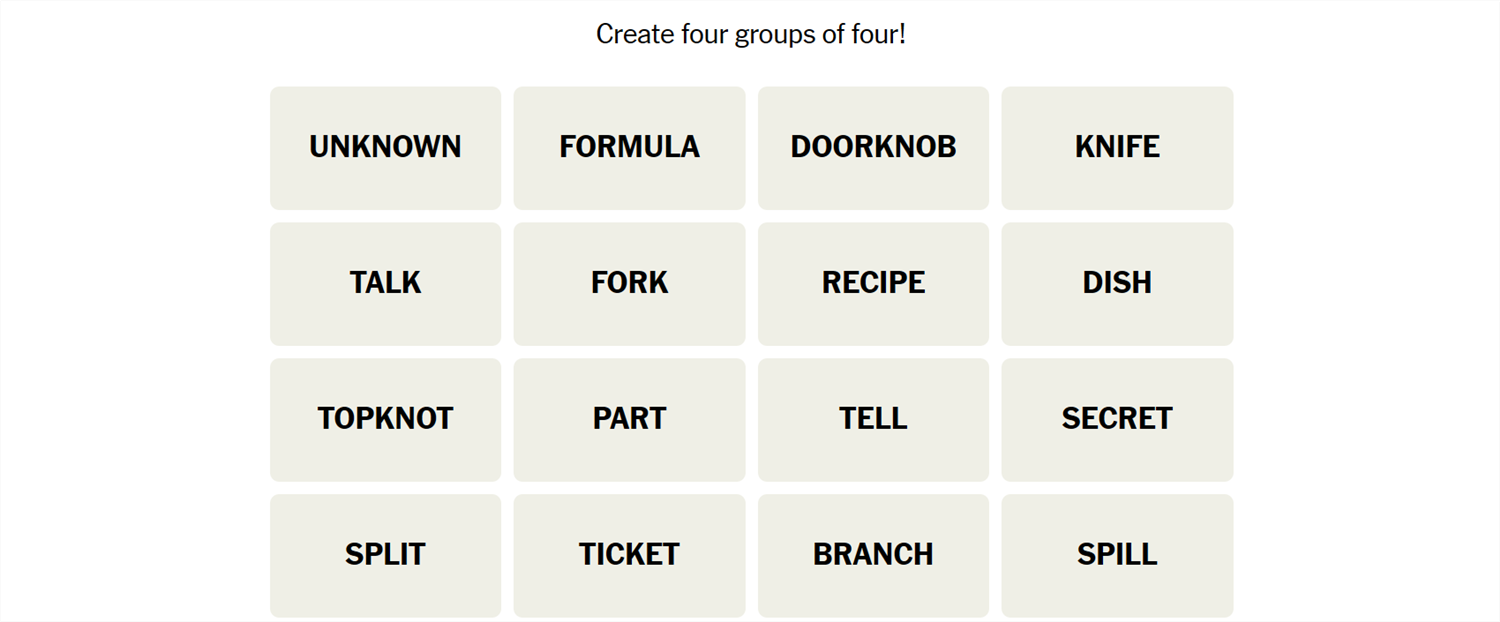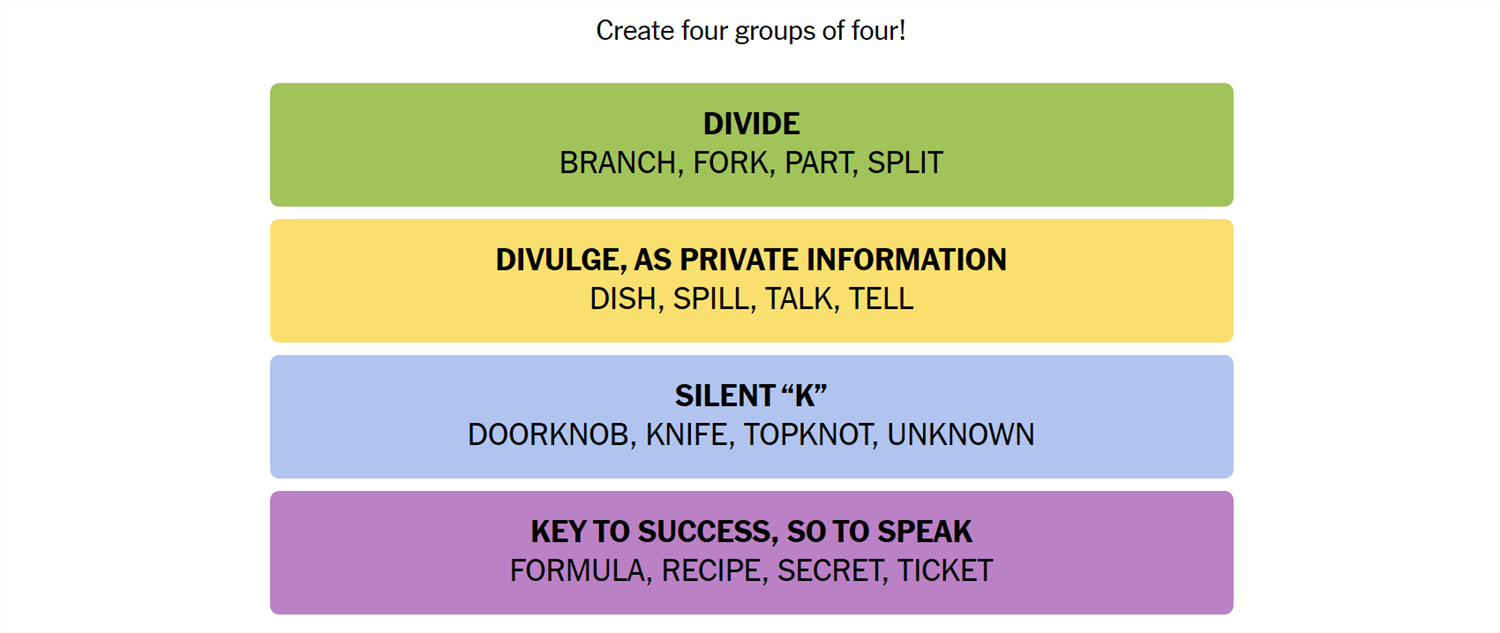Connections is a game from the New York Times that challenges you to find the association between words. It sounds easy, but it isn’t—Connections categories can be almost anything, and they’re usually quite specific. If you need a hand getting the answers, we’ve got you covered.
What Is Connections?
Connections is a game from the New York Times. The objective is simple: sort 16 words into groups of 4. Each group of words will be connected by some common idea or theme. That common element could be anything. We have seen everything from games that rely on the number of letters in the words to categories that require you to spot an extra letter at the end of the word. Sometimes they’re references to economics, other times they reference fairy tales. There is no telling what sort of association there will be between words.
Once you’re confident you understand the connection, select 4 words, then hit “Submit.” You have only four attempts in total, so don’t be too guess-happy.
Hints for Today’s Connections Groups
Here are a few hints for the 380th Connections game to get you started:
- Yellow: When you’ve been injured, physically or emotionally.
- Green: What do these words sound like?
- Blue: What you might expect when you go out to eat.
- Purple: These words pair with a color.
If you still need help, the actual group names are:
- Yellow: Divulge, as Private Information
- Green: Divide
- Blue: Silent “K”
- Purple: Key to Success, So to Speak
Today’s NYT Connections Answers
Divulge, as Private Information (Yellow):
Dish, Spill, Talk, Tell
Divide (Green):
Branch, Fork, Part, Split
Silent “K” (Blue):
Doorknob, Knife, Topknot, Unknown
Key to Success, So to Speak (Purple):
Formula, Recipe, Secret, Ticket
How Did We Solve This Connections Game?
June 25th felt pretty easy.
The word I started with was fork. Since I’d just been thinking about GitHub, I immediately thought about something splitting off rather than the utensil. From there, it was easier to pick up branch, part, and split—all ways of describing “Divide” (Green).
Next, I looked at spill. Spill can be literal, as in when you dump something out accidentally, but it can also be used figuratively to mean “tell a secret,” as in the expression “Spill the beans.” Why are the beans secrets in this expression? No idea, but apparently secrets are what beans and tea have in common. With the second definition in mind, dish, talk, and tell seemed like reasonable words to throw into a group with spill. Secret was appealing, but as a verb, it didn’t match the idea I was working with.
Dish, spill, talk, and tell belonged to the Yellow group, “Divulge, as Private Information.”
With 8 left, I decided to look for the Purple group. Since Purple often involves something about the words themselves, I soon noticed that 4 words—doorknob, knife, topknot, and unknown—all have a “Silent K” in them, so I tried it out. Surprisingly, the guess was right, but “Silent K” was actually the name of the Blue group rather than Purple.
That left formula, recipe, secret, and ticket. They seemed vaguely related by the idea of being important to achieving good results, but I didn’t have anything more specific than that. It turns out that Purple was “Key to Success, So to Speak.” Close enough.
How Do You Guess Connections Groups?
There is no quick, reliable way to approach Connections like there is with Wordle, since Connections isn’t algorithmic. However, there are a few things to keep in mind that can help.
- Look for similar parts of speech. Are some words verbs and others nouns? Are some adjectives? Try mentally grouping them based on those categories and see if any other patterns jump out at you.
- Are the words synonyms? Sometimes categories will just be synonyms for a phrase, or very close to synonyms. Don’t rely too closely on this, though. Occasionally, Connections will deliberately throw in words that are sometimes synonyms to mislead you.
- Try saying the words. Sometimes, saying the words helps. One puzzle we saw included the words go, rate, faster, clip, pace, speed, move, commute, and hurry—all of which are obviously related to the idea of motion. However, when you say them, it becomes a little more obvious that only four (go, move, hurry, faster) are things you’d actually say to prompt someone to get moving.
- Expect the red herring. Connections usually has words that could be plausibly, yet incorrectly, grouped together. Take the words Bud, Corona, and Light, as an example. You might instinctively see those three words together and assume they’re lumped together in a category related to beer—but they weren’t.
- Look for distinct words. If a word on your board doesn’t have multiple meanings or can really only be used in one context, try using that word as the basis for a category.
- Shuffle the board. Sometimes, moving words around will help you look at them in new ways.
If you didn’t solve this one, don’t feel too bad—there’s always tomorrow! And those words may align with a topic you’re interested in, giving you a leg up on the competition.






